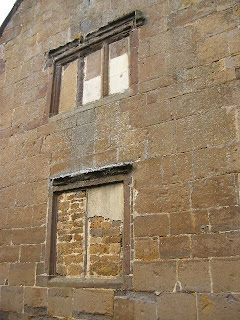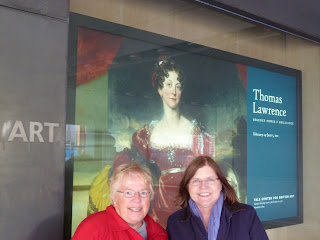 Last week I was fortunate enough to visit the Yale Center for British Art to view the art exhibit, Thomas Lawrence: Regency Power and Brilliance. I must credit Victoria Hinshaw of Number One London with the idea to go to New Haven for this exhibit. The only other time this collection of paintings was shown was at the National Portrait Gallery in London.
Last week I was fortunate enough to visit the Yale Center for British Art to view the art exhibit, Thomas Lawrence: Regency Power and Brilliance. I must credit Victoria Hinshaw of Number One London with the idea to go to New Haven for this exhibit. The only other time this collection of paintings was shown was at the National Portrait Gallery in London.
Every year Vicky visits Washington, D.C., and we have lunch with my friends Julie and Carol. The four of us went on the same tour of England in 2005 and we’ve been friends ever since. This year we not only had lunch, but Vicky and I conned my husband into driving the two of us to New Haven (6 hours from here) on Thursday and back on Friday so Vicky could get her plane home on Saturday. The dh thought we were crazy but he went along with the scheme!
Vicky had also contacted the Public Relations staff for the exhibit and so when we arrived we were treated as VIPs! But even if we hadn’t been welcomed so warmly, the exhibit would have been worth it. It was spectacular!
Thomas Lawrence (1769-1830) began his art career in Bath at age eleven when he supported his family by selling portraits in pastels. At age eighteen, he moved to London and trained for three months at the Royal Academy. By age twenty-one he exhibited twelve portraits, including this one of Elizabeth Farren, and actress who eventually married the Earl of Derby.
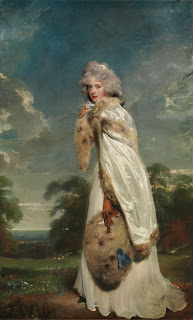
This is my absolute favorite of all the portraits and that is saying a lot, because there were so many beautiful ones.
This painting is on loan from the Metropolitan Museum of Art in New York City.
Here is another beautiful lady on loan from the Art Institute of Chicago, Isabella Wolf.
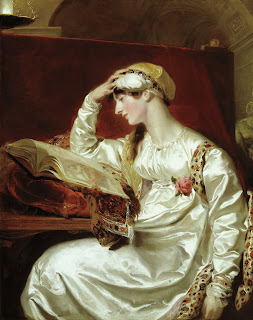
Isabella Wolff was an intimate friend of Lawrence’s. Some say she bore him a child, although there is no conclusive evidence that this was true. Certainly she was a long time friend. This portrait was thirteen years in the making.
Here is another one on loan from the Albright-Knox Gallery in Buffalo, an image of Rosamund Hester Croker, later Lady Barrow.
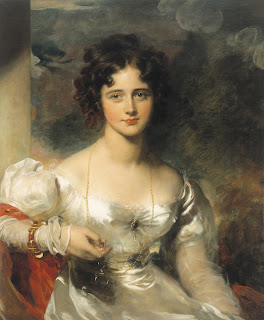
The portrait of Miss Croker was exhibited before she was presented to society. You can imagine it attracted a great number of gentlemen admirers. It figured in the arrangement of her eventual marriage to George Barrow, oldest son of Sir John Barrow, author of Mutiny on the Bounty.
Dated 1827, the portrait is a bit later than the Regency, but, to me, she epitomizes a Regency heroine.
And if you can get to New Haven before June 5, the end of the exhibition, GO!!!!
Vicky and I toured the exhibit twice. Once upon arriving at Yale on Thursday and then again the following morning before we had to leave. I rather wish I could go through it again….
Today I showed you some of the beautiful ladies of the Lawrence exhibit. This Thursday on
Diane’s Blog, I’ll share some of the gentlemen who could possibly be heroes in a Regency romance.
And I’m giving away a prize! Some postcards from the gift shop of the Yale gallery. Comment here and on
Diane’s Blog for a chance to win. Winner will be announced on Diane’s Blog next weekend.
Tell me which of the ladies above is your favorite. Or tell me what has been your favorite experience with art. Or anything!!

